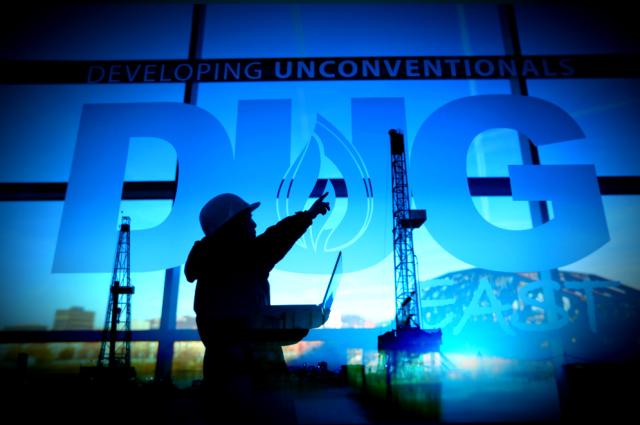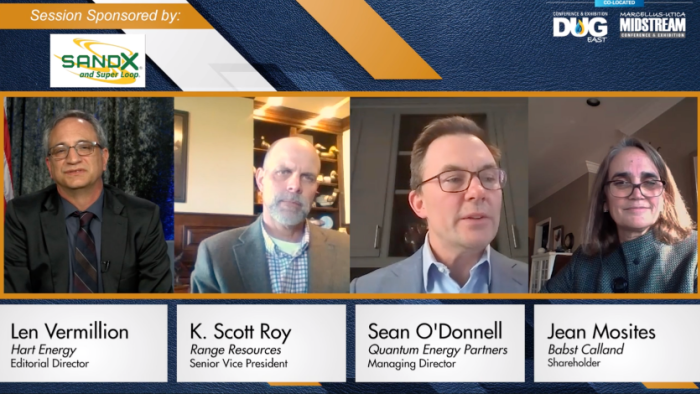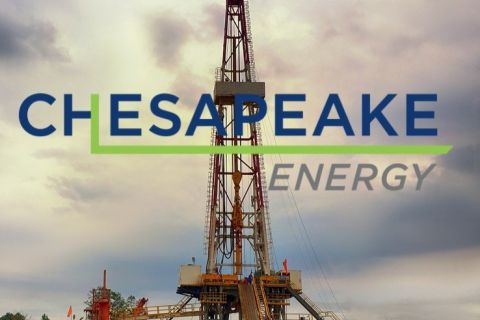
(Source: Hart Energy; Shutterstock.com)
Following the U.S. election in November, the regulatory environment facing Appalachian natural gas producers is either a bit clearer or less clear, depending upon who you ask. What is crystal clear, however, is that every producer in the basin, and beyond, will be talking about ESG (environmental, social and governance) reporting for the foreseeable future.
If you have any doubts just watch the replay of Hart Energy’s DUG East and Marcellus-Utica Midstream Virtual Conference, which began streaming on-demand on Dec. 2. You’ll be hard-pressed to find many sessions that didn’t, at least partially, talk about those three big letters.
That is because investors want to be assured companies are addressing climate risks and diversity in their operations and management. Black Rock, which has been vocal about ESG, just this week announced a new platform it will used to assess climate risk of companies, according to an Axios report.
So, if you want the money, you’ll need to talk the talk and walk the walk. That goes for Appalachian Basin natural gas producers as well, election results aside, according to Sean O’Donnell, managing director at Quantum Energy Partners.
“The capital markets have been ‘voting’ ESG points of view with its dollars for the better part of a couple of years,” O’Donnell said during a roundtable focused on ESG at the virtual conference.
So, hopefully, you’ve begun your ESG initiatives. If you haven't, the panelists agree that you’re already a few steps behind.
“The industry and the market have been driving the discussion and performance on these issues,” said K. Scott Roy, senior vice president at Range Resources Corp., which recently released its net-zero goals in a report. “If you’re starting now, you’ve got a lot of catching up to do.”

Range Resources’ recent sustainability report is an attempt to engage and communicate the company’s performance to a diverse set of stakeholders, Roy said, including “investors to banks to consumers, communities where we work, our employees, policymakers.”
“Over the last several years, their interests have merged and focused on performance, which is generally referred to as ESG,” he continued. “As a producer, a couple of key areas to focus on are emissions management, water management, but, of course, we’re also communicating on safety and community involvement.”
Roy advised the approximately 1,500 registrants of the virtual event that addressing ESG is more than simply checking boxes.
“[Our] report reflects work that is occurring daily and has been ongoing for years,” he said. “While we just published our most recent report in August, this is an effort that has been underway for years.”
Speak Up
Since ESG is not new, one might wonder why has ESG become such a big talking point now? The short answer is, the story has largely gone untold, O’Donnell said.
“As it relates to just advocating for a lot of the good work that has gone on, that’s big part of this,” he said. “A big part of the campaign is being at the table. That’s something we’ve, with 30-some companies in the Quantum portfolio, elected to get a seat at the table with from a sponsor standpoint because there is a tremendous amount of good work that has gone on for years but that story has gone untold.”
The growing spotlight on ESG, he said, amounts to the industry telling everyone what it’s been doing and holding itself accountable in the public domain versus keeping everything that has happened to make progress behind the scenes.
O’Donnell also pointed out that investors have played a large role in bringing ESG to the forefront. “The science is debated but still largely understood. The technology is available. So, the room for debate has really narrowed,” he said.
Further, while some companies may want to ignore or deny certain things, he said they need to understand that there are really no excuses left or places left to hide. The capital markets are going to hold us all accountable.”
In short, O’Donnell said, “dollars will not flow to team or companies who do not have robust programs. It’s as simple as that.”
Size and Scale
The importance of embracing ESG initiatives goes for large publics and small independent alike, according to Jean Mosites, shareholder with Babst Calland who also spoke on the panel.
“Every company knows that they need to be and want to be environmental stewards. There’s consistency on that,” Mosites said. However, she noted, “how they do it, when they do it, where they do it is going to vary. Small companies are just going to face a different question of resources and priorities.”
You don’t have to move mountains all at once, according to Roy. Everything simply starts with engaging on the issues. The key is providing data that demonstrate incremental gain over time.
“I don’t think the expectations in terms of performance are unreasonable,” he said. “I think it’s scalable so even for the smaller operators there’s an opportunity to recognize the issue, engage in the discussion and communicate incremental advances in performance over time.”
RELATED:
Virtual DUG East: CNX Resources’ Nick Deluliis Talks M&A and ‘Reckonings’
“And, there’s innovation that some companies might be able to mold for others,” Mosites added. “Small companies can certainly take advantage of those efficiencies.”
As for Quantum, which has different size companies in its portfolio, O’Donnell said the firm faces the challenge of scalability and standardization. “We do have a number of smaller operators so the consistency [of a program] is part of our challenge, getting everyone to the same starting point,” he said.
From there the march toward success begins at a different pace for different companies. The important part is to get moving.
Recommended Reading
Petrie Partners: A Small Wonder
2024-02-01 - Petrie Partners may not be the biggest or flashiest investment bank on the block, but after over two decades, its executives have been around the block more than most.
Chesapeake Slashing Drilling Activity, Output Amid Low NatGas Prices
2024-02-20 - With natural gas markets still oversupplied and commodity prices low, gas producer Chesapeake Energy plans to start cutting rigs and frac crews in March.
Hess Corp. Boosts Bakken Output, Drilling Ahead of Chevron Merger
2024-01-31 - Hess Corp. increased its drilling activity and output from the Bakken play of North Dakota during the fourth quarter, the E&P reported in its latest earnings.
Matador Resources Announces Quarterly Cash Dividend
2024-04-18 - Matador Resources’ dividend is payable on June 7 to shareholders of record by May 17.
CEO: Coterra ‘Deeply Curious’ on M&A Amid E&P Consolidation Wave
2024-02-26 - Coterra Energy has yet to get in on the large-scale M&A wave sweeping across the Lower 48—but CEO Tom Jorden said Coterra is keeping an eye on acquisition opportunities.





